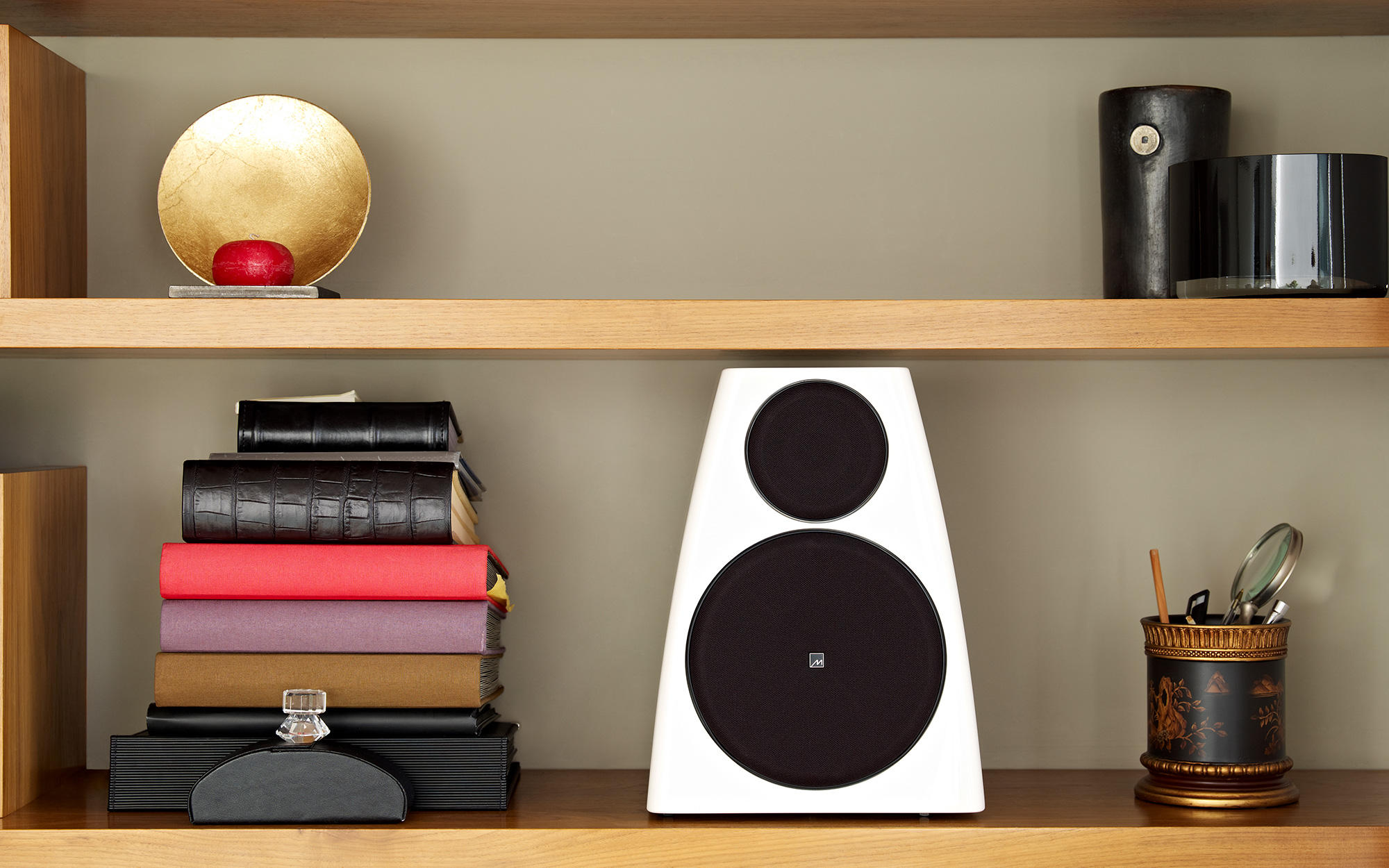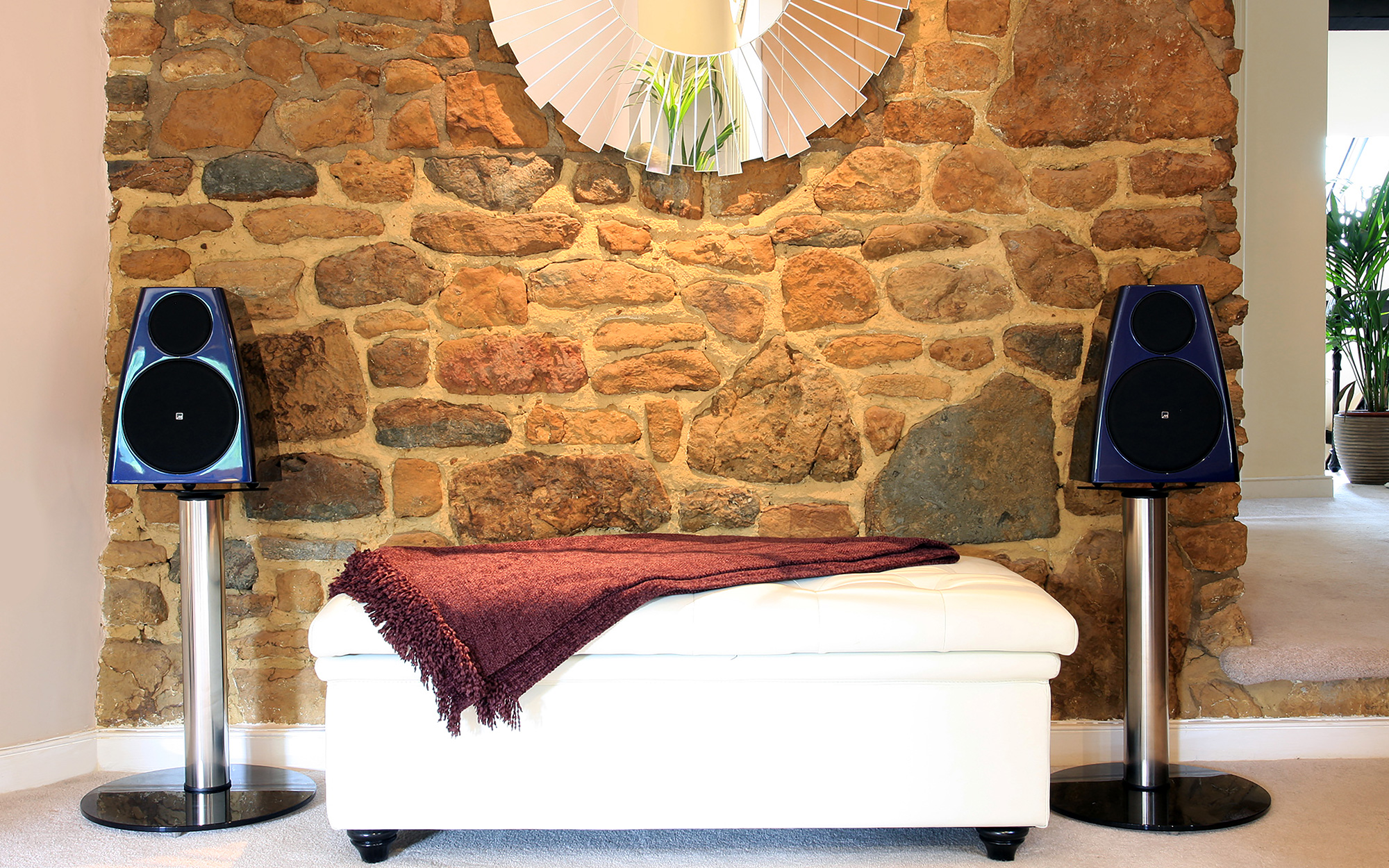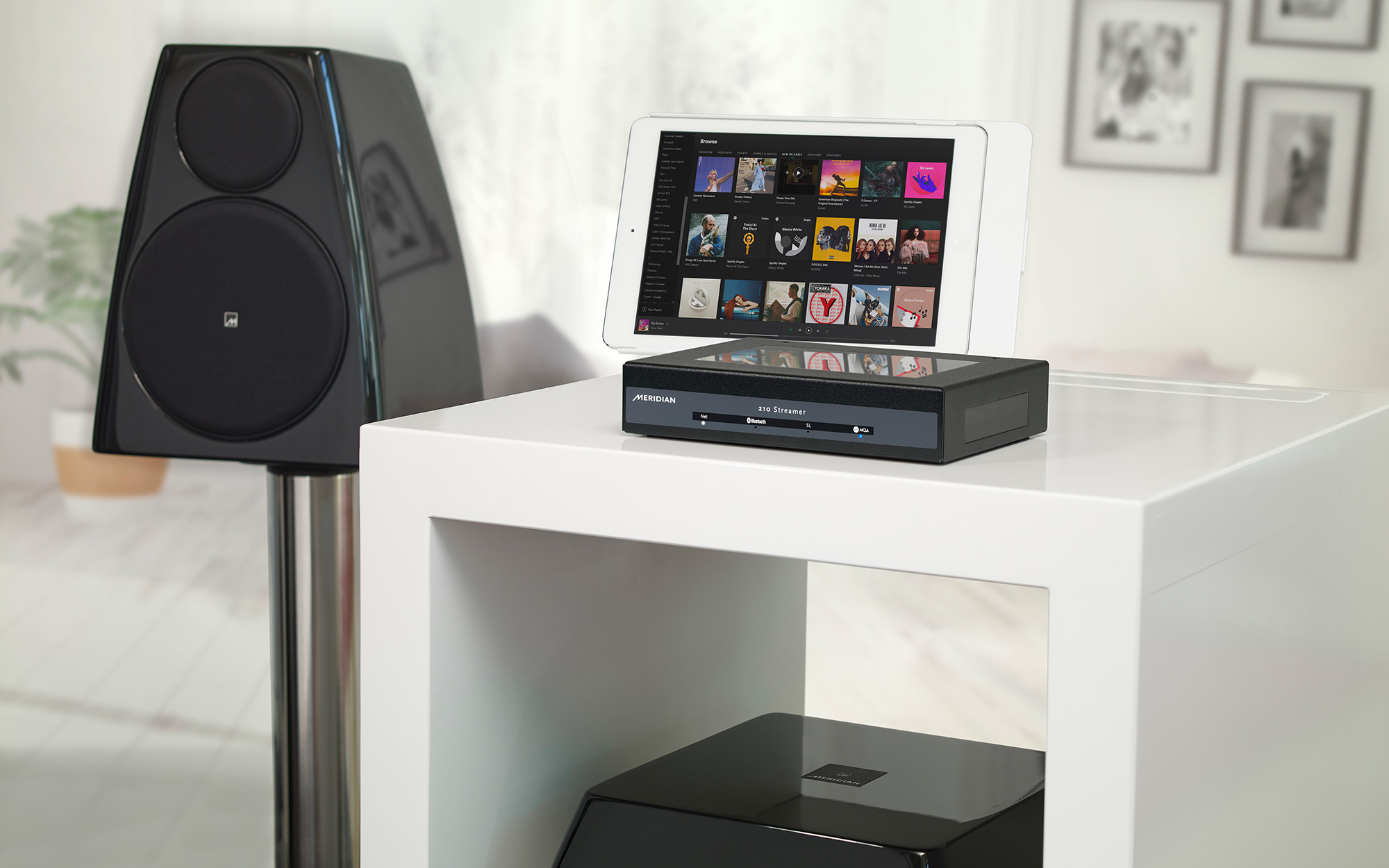
Performance Series
Meridian customers - create an account so you can register your product(s) for your extended warranty.
Dealers, integrators, and installers - create an account to request access to Dealer Resources and/or apply to become a Meridian dealer.

Performance Series
The DSP3200 is a compact loudspeaker that provides a powerful performance well beyond what is expected for its size. It is suitable for intimate listening spaces or as part of a larger installation.
The DSP3200 employs Meridian’s award-winning DSP technologies, two integrated amplifiers and two drive-units.
The DSP3200 is suited for use in a wide variety of locations including bookshelf, on wall and on floor stands. The speakers are also ideal for use in multi-room installations and home cinemas and are the perfect partner for the Meridian 218 Zone Controller which can be connected by SpeakerLink cables.
Find a distributorPerformance Series
DSP3200
Beautifully mirroring the curves of our larger loudspeakers, this compact loudspeaker delivers as much quality sound as a conventional loudspeaker of eight times the physical volume - delivering the atmosphere and emotion of a live performance straight into the home. The precision-manufactured cabinet is finished in high-gloss black and is perfectly suited to an extensive variety of room locations including bookshelf, on wall, as well as on floor stands. Its size makes it the perfect partner to other Meridian DSP loudspeakers in a variety of installations.
Meridian Bespoke Signal Mapping utilises digital signal processing to apply tailored crossover filters that are designed specifically for each configuration of drive units within a loudspeaker.
Meridian E3 Bass uses specifically designed filters to expand, extend and enhance the low-frequency response of the loudspeaker.
FFA (Full Frequency Alignment) is a combination of digital filters and delays to correct the group-delay of a loudspeakers. It ensures that all frequencies reach the listener’s ear at the same time.

Meridian Q-Sync deploys Meridian's multiple “First In, First Out” buffering system which minimises jitter, ensuring perfect timing and improved clarity.
Meridian Pro-Active Bass protects the bass drivers from over-excursion, ensuring maximum bass output without damaging the drive units.
Meridian Pro-Active Thermal monitors the audio being sent to the wide-range driver and limits the overall volume of the loudspeaker if there is a risk of the drive unit getting too hot.
True Time is Meridian's proprietary Apodising Filter that avoids pre-ringing and cleans up the effects of early filters, converting pre-echo to post-echo.
Meridian True Link is an encryption method for transferring high-definition digital audio over SPDIF connections. It allows secure movement of digital audio whilst ensuring that the SPDIF clock signal can be transmitted with minimum degradation.
Meridian Free-Q is used to compensate for acoustic problems associated with specific loudspeaker placement conditions.
The Performance series comprises a collection of loudspeakers that offer innovative and compact designs without compromise. Featuring individual components that are perfectly matched and sonically balanced, they deliver a level of performance that is unsurpassed by traditional speaker design.
The modest size of the DSP3200 is ideal for smaller rooms and they can be used on stands, wall mountings or bookshelves.
Here you will find a quick overview of the product highlights and features.
Here you will find installation information and operating instructions.
Here you will find a summary of the complete range of Meridian products in one document.
Audio Input
1 x Meridian SpeakerLink (RJ45) accepting 32kHz to 96kHz sampling rates at up to 24-bit
Audio Output
1 x Meridian SpeakerLink (RJ45) delivering 32kHz to 96kHz sampling rates at up to 24-bit
Performance
Peak SPL: 114dB at 1m
Noise less than 15dB SPL
Frequency response in-room within 3dB: 45Hz to over 20Hz
Amplifiers
2 x 75w (150w)
Overall distortion typically <0.02% at any frequency or level
Bass Driver
1 x 165mm polypropylene long-throw bass driver
Wide-range Driver
1 x 85mm aluminium cone wide-range driver
Dimensions / Weight
HEIGHT: 320mm [12.6in] (without feet)
WIDTH: 244mm [9.6in] (Max at base)
DEPTH : 246mm [9.7in] (Max at base)
WEIGHT: 8.5kg [20lbs]
Power
550W (maximum)





With power applied to the product and the mains switch in the 'On' position, the green LED on back-panel should illuminate dimly. If it does not light up, the mains supply and the mains inlet fuse should be checked.
The DSP3200 comes out of Standby mode when it receives an appropriate communication signal from another Meridian product. This signal is received on the SpeakerLink input socket of the loudspeaker and is produced when the rest of the system is brought out of Standby. When this happens, the green LED on the back-panel of the DSP3200 is illuminated brightly.
In Standby mode, the green LED on back-panel illuminates dimly. When out of Standby, the green LED illuminates brightly. As 'brightly' and 'dimly' are relative terms, it can be useful to watch the LED as the system is brought out of Standby. The change from dim to bright is quite obvious and should confirm whether the product is coming out of Standby mode.
Each loudspeaker uses a maximum of 200W.
The loudspeaker on the left (when viewed from the listening position) should be set to 'L/C' and the loudspeaker on the right should be set to 'R'. The switch is required because the SpeakerLink lead feeding the loudspeaker carries both left and right audio channels. The switch 'tells' the loudspeaker which channel to pick up from the lead. This is true even when each loudspeaker is fed with a dedicated SpeakerLink lead.
Loudspeakers in use as main-left, side-left, rear-left or centre channels should be set as 'L/C'. Set the switch to 'R' for loudspeakers in use as main-right, side-right or rear-right channels.
The pair of loudspeakers can be connected in a 'daisy-chain' arrangement. The input of one loudspeaker should be connected to the SpeakerLink output on the controller-product. The output of this loudspeaker is then connected to the input socket on the other loudspeaker.
Yes. If cabling arrangements or other physical considerations preclude star-wiring, daisy-chaining can be used for a pair of DSP3200. This applies as long as the two loudspeakers are a “pair” as defined in a Meridian system, i.e. they are the left and right main channels, the rear-left and rear-right channels or the side-left and side right channels.
As the DSP3200s are quite small physically, the general advice is to set them to 'Small'. This will divert low-bass (as defined by the crossover setting in configuration) away from the loudspeakers in question and send it to the subwoofer and/or the 'Large' loudspeakers in the system. The exact route of the bass is determined by several factors within configuration. However, in a system with no subwoofer, the main (front) loudspeakers are forced to be 'Large', regardless of their physical size. If all the other loudspeakers are defined as 'Small', the main loudspeakers will be asked to playback all the bass for the system. In such cases, defining DSP3200s as 'Large' could help spread the bass load across the system. This could result in improved bass reproduction at low to mid volume levels and, as the DSP3200s feature Meridian's Pro-active Bass technology, even at high volumes the risk of 'bottoming out' a bass drive is minimal.
Bass output can be increased, but it may require some configuration. Refer to our support documentation relating to subwoofer for further information.
This can be done if a Meridian 218 Zone Controller is also added to the system. The 218 has on-board DSP which can derive dedicated feeds for the subwoofer as well as the main left and right channels. The 218 features gain and filter controls to allow the subwoofer to be sonically integrated with the main loudspeakers.
Yes. There will be no need to use an external PSU with the Distributor 1.
Yes, the loudspeakers feature four mounting holes on their back-panels which are spaced correctly to accept the 'König and Meyer 24471' wall bracket.